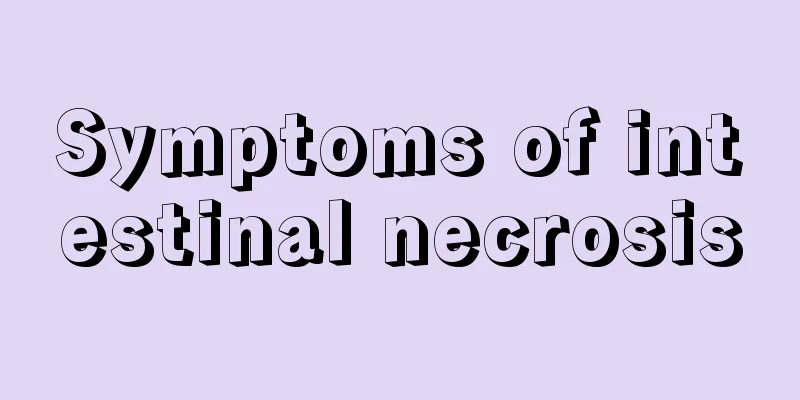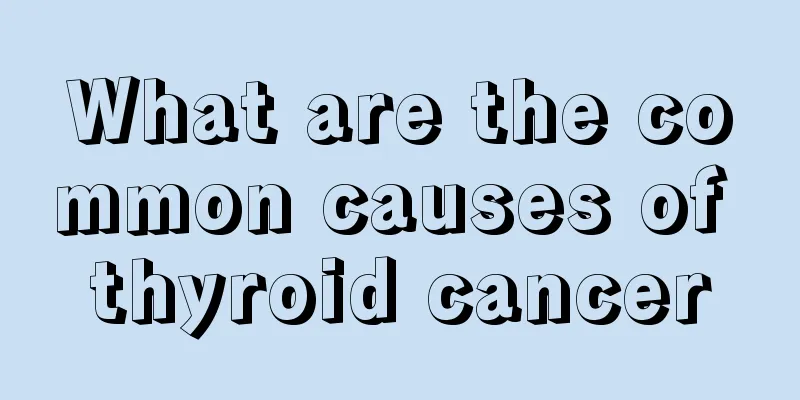Symptoms of intestinal necrosis

|
No matter which part of the body has problems, there will be corresponding symptoms. So what are the symptoms of intestinal necrosis? Once you suffer from intestinal necrosis, the first symptom is diarrhea, followed by nausea and vomiting. Of course, the stomach pain will also be more severe. If it is very serious, blood in the stool will occur. You should seek medical treatment immediately and do not let the disease continue to develop. 1. Symptoms of intestinal necrosis 1. Nausea and vomiting It often occurs simultaneously with abdominal pain and diarrhea. The vomitus may be yellow water, coffee-like or bloody, and may also contain bile. 2. Symptoms of intestinal necrosis 2. Abdominal pain The onset is acute, with sudden abdominal pain, which is often the first symptom, mostly around the navel. At the beginning of the disease, it is often manifested by gradually worsening paroxysmal colic around the umbilicus or in the upper and middle abdomen, which then gradually turns into persistent pain in the entire abdomen with paroxysmal worsening. 3. Symptoms of intestinal necrosis 3. Diarrhea and blood in the stool Diarrhea may occur after abdominal pain occurs. The stool is initially paste-like and contains feces, then gradually becomes yellow water-like, followed by white water or red bean soup and jam-like, and may even be blood-like or dark red blood clots. The stool is small in size and has a foul odor. No tenesmus. The amount of bleeding varies. In mild cases, there may only be diarrhea, or only positive fecal occult blood without blood in the stool; in severe cases, the amount of bleeding can reach hundreds of milliliters a day. Diarrhea and bloody stools may last as short as 1 to 2 days or as long as more than a month, and may occur intermittently or repeatedly. Severe diarrhea may lead to dehydration and metabolic acidosis. 4. Symptoms of intestinal necrosis 4. Abdominal signs Relatively few. Sometimes there may be abdominal distension and intestinal pattern. There may be obvious tenderness around the umbilicus and upper abdomen. Bowel sounds may be hyperactive in the early stages and then weaken or disappear. 5. Symptoms of intestinal necrosis 5. Systemic symptoms After the onset of the disease, systemic symptoms such as general discomfort, weakness and fever may appear. The fever is generally between 38 and 39°C, and may reach 41 to 42°C in a few cases. However, the fever usually subsides within 4 to 7 days, and it is rare for the fever to last for more than 2 weeks. |
<<: Symptoms of lumbar spondylolisthesis
Recommend
Bald men are more susceptible to prostate cancer. Prostate cancer is more likely to attack bald men
Baldness is a very distressing thing for men. Onc...
There is a white part in the middle of the nail
Everyone knows that healthy nails are very rosy, ...
I still feel thirsty even though I drink water frequently
Many people drink water every day, but they still...
What are the symptoms of esophageal thrush?
Vasculitis is actually a common disease in surger...
What is the correct way to use Indian magic oil?
Perhaps many adult men and women know the product...
How to identify pain when pressing on the left lower abdomen
There are many factors that cause abdominal pain,...
How to choose the best hospital for ovarian cancer treatment
Ovarian cancer is one of the most common malignan...
Hard contact lenses
Contact lenses are a common way of correcting vis...
How to perform ovarian tumor surgery
It is generally recommended to go to the hospital...
Can the oil still be consumed after it expires?
In recent years, gutter oil has been rampant in v...
Can I eat rice balls if I have skin allergies?
Can you eat rice balls if you have skin allergies...
Your own health condition is also related to the occurrence of skin cancer
Skin cancer is a common cancer. Because some canc...
Is it hereditary that the front and back sounds of the tongue tip are unclear?
Unclear pronunciation of the front and back sound...
Where does bone cancer usually hurt in women
Bone cancer is a relatively rare but serious mali...
If the iron is leaking, check the circuit in time
When people wear clothes for a long time, wrinkle...









